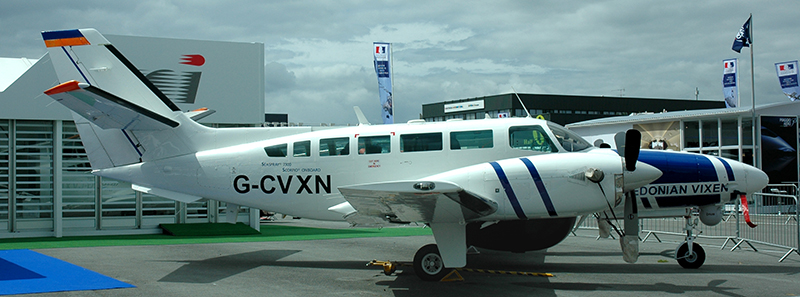In March 2014, when bankruptcy was nearing, it was decided to transfer the aircraft logistic support issues to ASI and then to move the assets of the F 406, still in slow production, to Continental Motors. But the financial situation worsened and, on September 10, 2014, what remained of Reims Aviation was forced to enter receivership. The historic manufacturer was acquired by the Chinese-owned Continental Motors. Two F 406 unfinished airframes were completed in France reaching a total production of 99 items. At first Continental Motors was intending to continue the production of the F 406 in their Mobile (Alabama) plant but only spare parts were manufactured from then on - a sad end to the Max Holste dream.
In the picture: Cessna (Reims) F 406 Vigilant G-CVXN (c/n F406-0064 built in 1991) of Caledonian Airborne Systems on static display at Le Bourget Air Show 2011. This aircraft is powered by two Pratt & Whitney PT6A-11 turboprop engines and fitted with a belly radome with BAE Systems Seaspray 2000 radar. On November 11, 1991 it was delivered to Scottish Fisheries which used it until 2008. Noteworthy the Citation fin. (Aeromedia)
(Aeromedia, September 2014)
